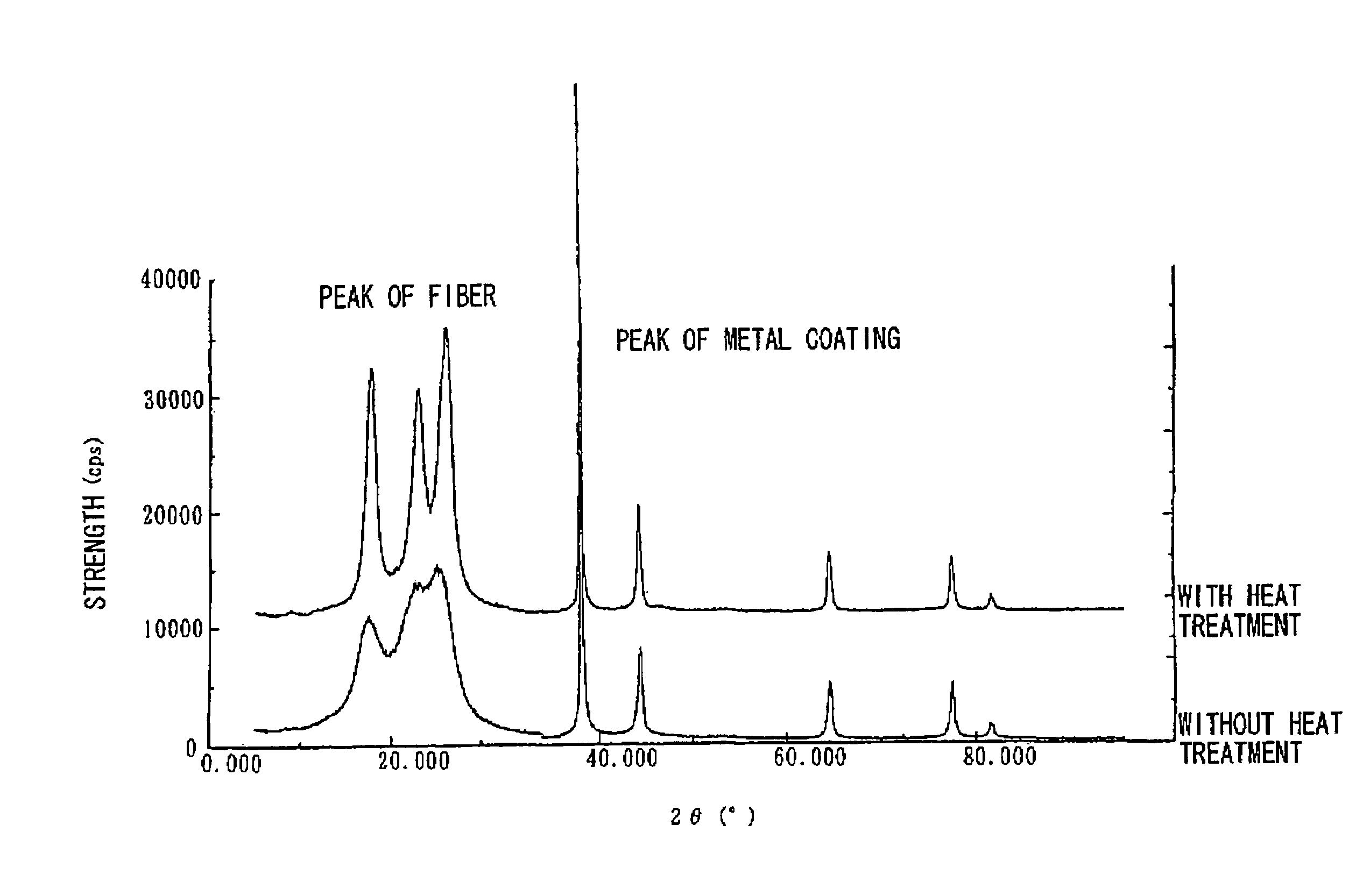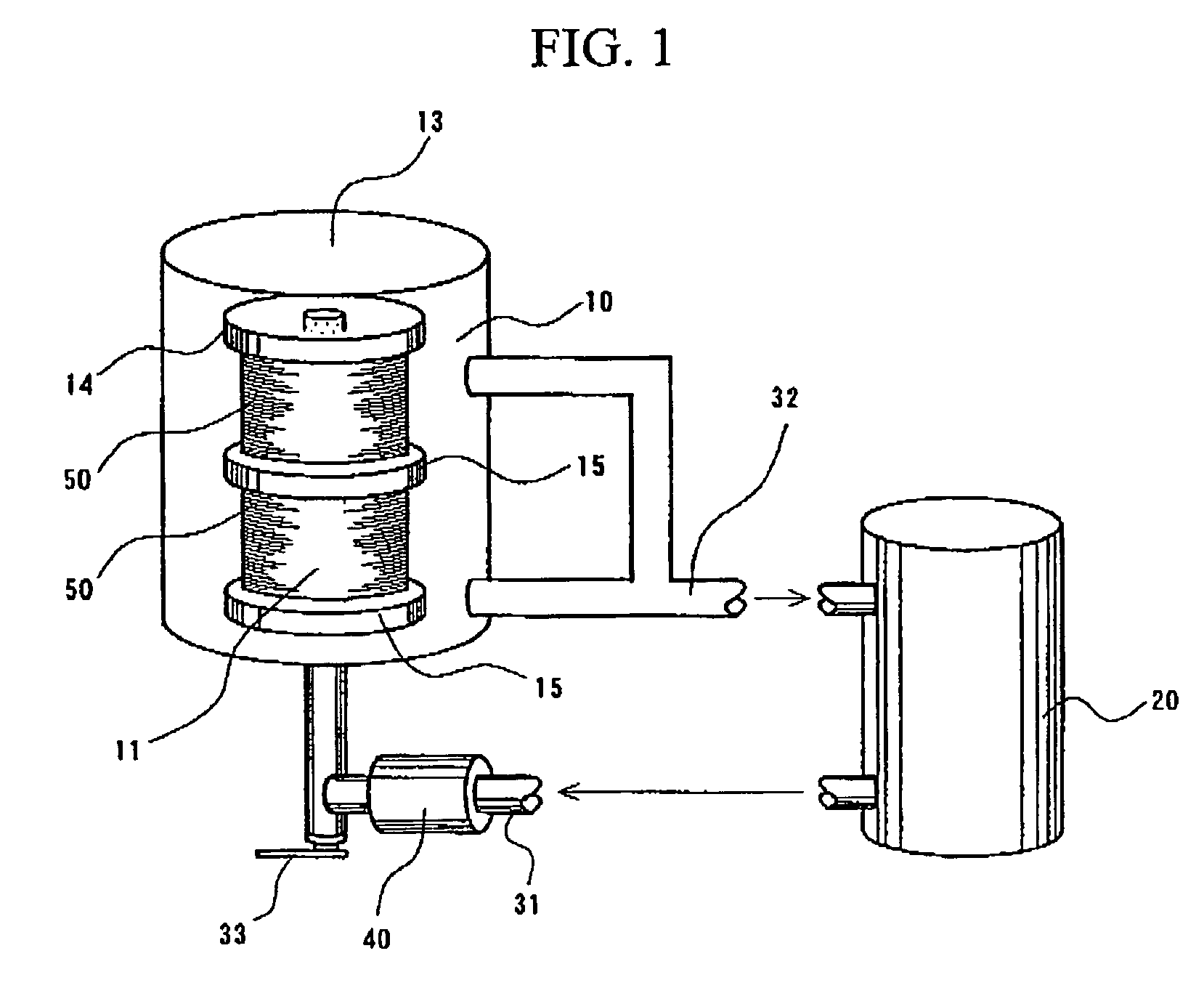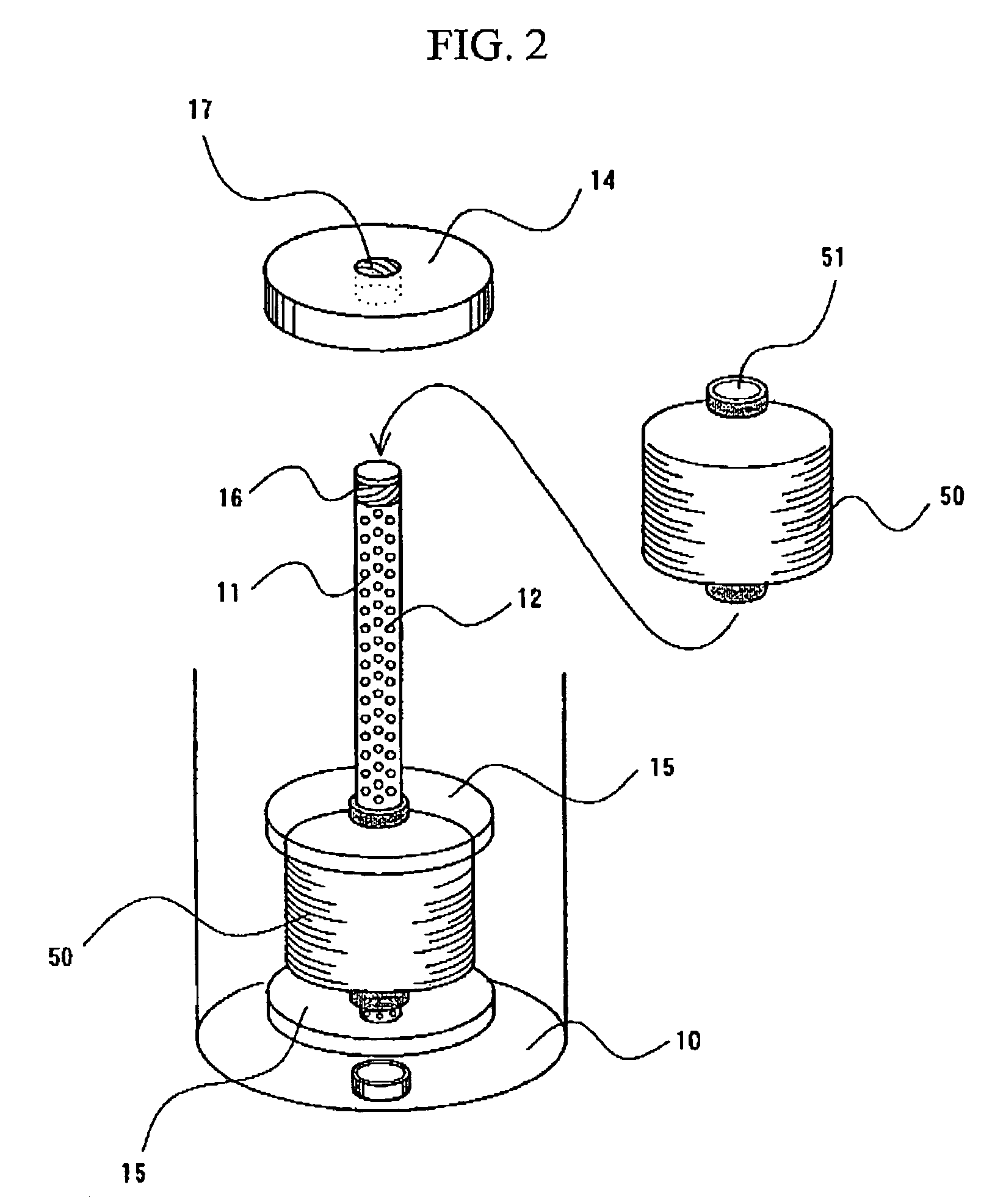Metal coated fiber and electroconductive composition comprising the same and method for production thereof and use thereof
a technology of electroconductive composition and metal coating, which is applied in the direction of yarn, transportation and packaging, coatings, etc., can solve the problems of limited fiber type, general method, and insatiable so as to improve the coating improve the strength of metal coating, and improve the effect of durability
- Summary
- Abstract
- Description
- Claims
- Application Information
AI Technical Summary
Benefits of technology
Problems solved by technology
Method used
Image
Examples
embodiment 1
[0033]A feature of this metal coated fiber is that a fiber provided with a metal coating is subjected to heat treatment at a temperature greater than the crystallization temperature but less than the melting temperature of the fiber, and is preferably cooled gradually following this heat treatment. In the description below, the term fiber is used to broadly include short fibers (staples), long fibers (filaments) and a variety of processed yarn formed therefrom (such as filament yarn or spun yarn).
[0034]In general, it is known that if a synthetic fiber is heated beyond the crystallization temperature, then in the case of both fibers and processed yarn, the length of the fiber contracts by as much as 10% as a result of recrystallization of the fiber. By providing a metal coating on the surface of the fiber, this contraction of the fiber arising from heating can be suppressed to a certain extent, although if the treatment following the metal coating is inappropriate...
example 1
[0062]As follows is a more specific description of the present invention using a series of examples.
[0063]Using the plating apparatus shown in FIG. 1 and FIG. 2, fibers formed from the polymer materials shown in Table 1 were each wound onto a take-up shaft to form a cheese wound body, and this body was then inserted in a plating tank, and following completion of (a) degreasing treatment, (b) alkali treatment and neutralization, and (c) activation treatment, each of which is described below, (d) electroless plating was performed using the metals shown in Table 1, and then (e) heat treatment was conducted. Each treatment was conducted by pressurized circulation of the appropriate chemicals.[0064](a) Degreasing Treatment: A 5 wt % solution of a degreasing liquid (brand name: Ace Clean A-220, manufactured by Okuno Chemical Industries Co., Ltd.) was circulated through the plating tank for 5 minutes at 55° C., and then ion exchange water was passed through the system to thoroughly wash th...
example 2
[0072]Using an electroless plating method, an acrylic fiber with a coating of 20 wt % of nickel provided on the surface was heated to 150° C. over a period of 30 minutes, this temperature was maintained for 1 hour, and the fiber was then cooled to room temperature (25° C.) over a period of 150 minutes, yielding a metal coated fiber of the present invention (No. A20). In addition, a heated comparative sample (No. B21) was prepared by conducting the same heat treatment, and then cooling the fiber to room temperature over a period of 30 minutes. Furthermore, an unheated comparative sample (No. B22) was prepared by not conducting any heat treatment following the plating treatment. The adhesive strength and the conductivity of the metal coating of each of these metal coated fibers were measured in the same manner as the example 1. The results are shown in Table 2.
[0073]As shown in Table 2, the unheated comparative sample (No. B22) displayed considerable separation of the metal coating af...
PUM
| Property | Measurement | Unit |
|---|---|---|
| thick | aaaaa | aaaaa |
| temperature | aaaaa | aaaaa |
| temperature | aaaaa | aaaaa |
Abstract
Description
Claims
Application Information
 Login to View More
Login to View More - R&D
- Intellectual Property
- Life Sciences
- Materials
- Tech Scout
- Unparalleled Data Quality
- Higher Quality Content
- 60% Fewer Hallucinations
Browse by: Latest US Patents, China's latest patents, Technical Efficacy Thesaurus, Application Domain, Technology Topic, Popular Technical Reports.
© 2025 PatSnap. All rights reserved.Legal|Privacy policy|Modern Slavery Act Transparency Statement|Sitemap|About US| Contact US: help@patsnap.com



